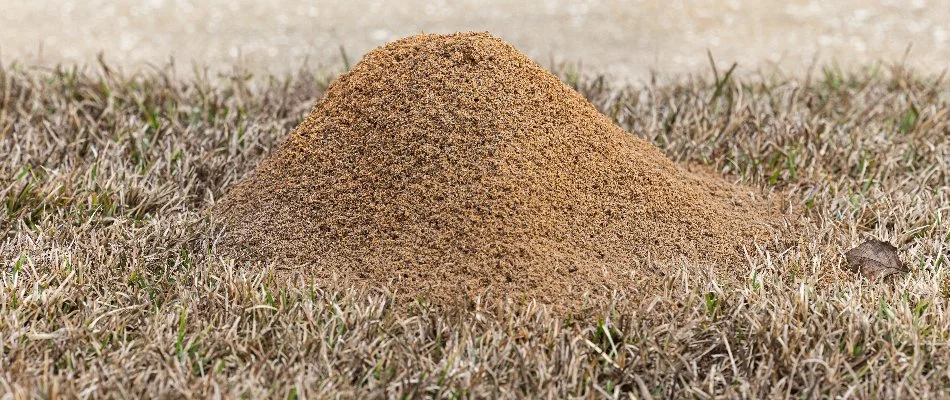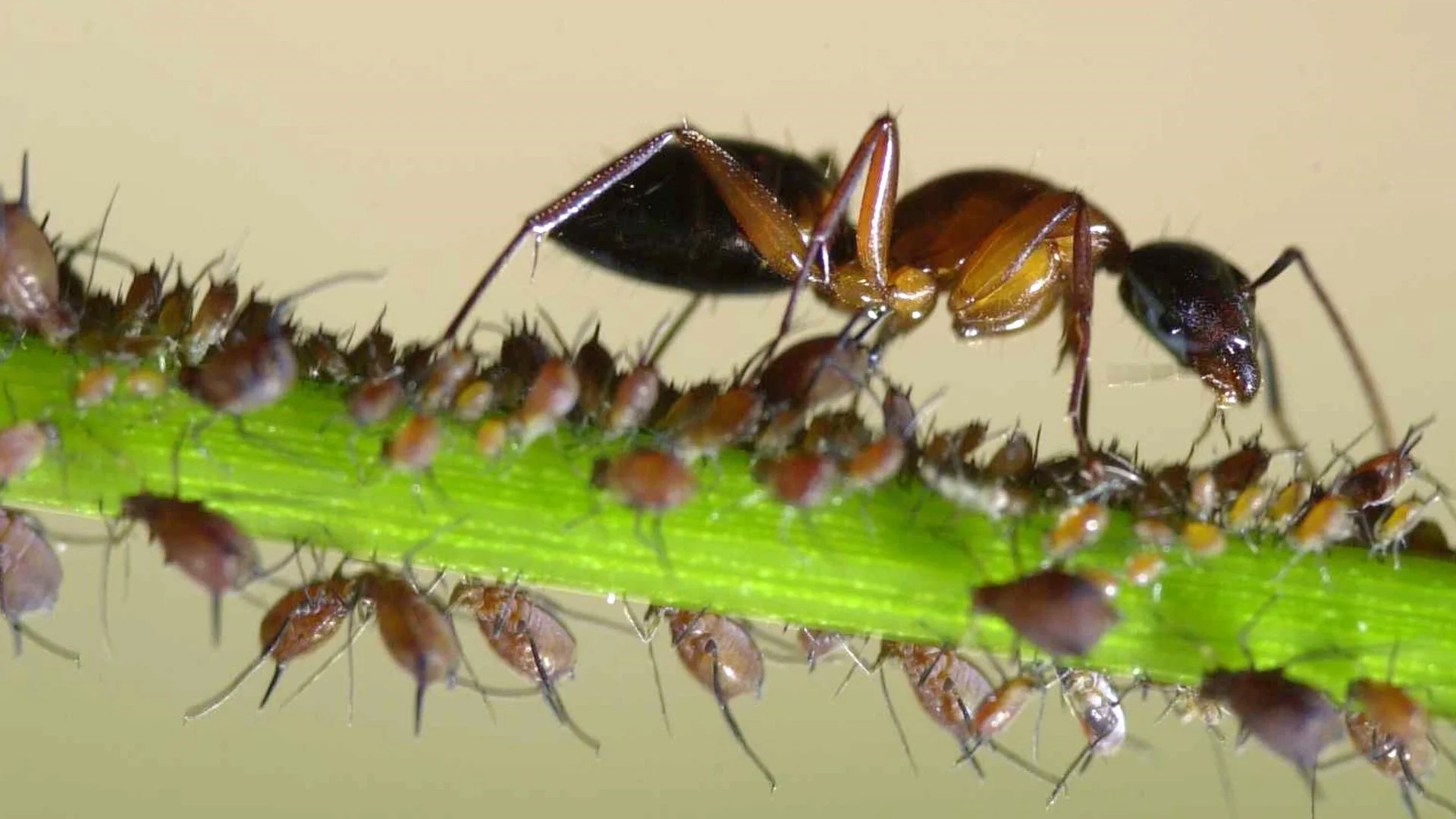Here in Texas, fire ants are very common, and if you're noticing ant mounds on your property, it very likely could be fire ant mounds! Fire ant mounds have a few characteristics that separate them from other types of ant mounds. Unlike other ant species, fire ants don't create a center hole in their mounds. Instead, they use underground tunnels to travel in and out. Their mounds will also commonly pop up on your lawn after it rains due to rainwater forcing the ants to the surface. Another common sign that would indicate that the ant mounds are in fact filled with fire ants is if they are aggressive. While you won't want to disturb these mounds to investigate further, if you happen to notice that the ants are very aggressive if the mound was disturbed, they are likely fire ants.
Fire ant mounds don't have a center hole.

If the ant mounds on your lawn have a visible entryway, then they're most likely not fire ant mounds. One major difference between fire ants and other species of ants is that fire ant mounds don't have the center hole commonly associated with ant mounds. Instead, fire ants build their mounds by pushing the soil upward and can have multiple exits and entrances connected to their underground tunnels that branch outward from the nest and reach up to 30 feet long. Because there is no center hole used as an exit and entrance, fire ant mounds are usually flat or dome-shaped and can often look like a small patch of soil that's been disrupted on your lawn.
Fire ant mounds tend to pop up after it rains.
If you've noticed ant mounds popping up on your lawn after rainfall, then this is a sign you have fire ants on your property. When soil is hard and dry due to a combination of heat and drought, fire ants won't make their mounds above ground. Instead, they'll nest deep within the ground until the rain forces them to do otherwise. Once it rains, the rainwater floods their underground nest and tunnels, forcing the fire ants to the surface and they have no choice but to build up. That's why fire ant mounds tend to pop up after it rains!
Fire ants become aggressive when their mound is disturbed!
Unlike other ant species, fire ants become instantly aggressive when their mound is disturbed. It doesn't take much to disturb a fire ant mound, because these ants are sensitive to vibrations and any nearby ground vibrations can trigger a defensive attack. Once fire ants feel threatened, they quickly emerge from the mound by crawling up any nearby vertical surfaces to potentially swarm the threat before administering painful bites and stings. Fire ants attack any threat to their nest by using their mandibles to hold onto their victim's skin while using their stingers to inject venom.
Fire ants are one of the few ant species that will aggressively charge up vertical surfaces to initiate an attack.
Contact us today to schedule our fire ant control treatment.
Are there fire ant mounds on your lawn? Our team of professionals at CitiTurf will eliminate any fire ants and their nests to ensure your lawn is a safe place to be once again. When you sign up for this service, we will administer our treatment across your property to make these pests a problem of the past! What's more, we back this service with a one-year warranty, so if you notice fire ant mounds on your property after our initial service, we'll come back out to deal with them at no additional cost! We provide our fire ant control treatment to residential properties in Plano, TX, and other surrounding areas, including Allen, Frisco, McKinney, and Murphy. Contact us today at 972-516-0001 to sign up!







